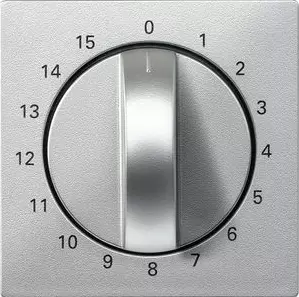Instructions for Installing and Connecting a Timer Switch:
A timer switch with a rotating dial works similarly to a kitchen timer, allowing you to turn on an electrical load for a specific duration of time.
Timer switches can be divided into two main types: analog timer switches and digital timer switches. Each type has its own features and functions. Here is some information about both types and the available programming options:
Analog Timer Switches:
Analog timer switches typically use a mechanical dial to set the desired switching time. These types of timer switches are easy to use and do not require complex programming. The switching time is usually set in intervals of 15 minutes or one hour. Some analog timer switches offer additional settings, such as an On/Off switch, to manually activate or deactivate the switching operation. Analog timer switches are suitable for simple applications where precise programming is not required.
Digital Timer Switches:
Digital timer switches offer advanced programming options and feature a digital display to show the current time and settings. They allow for more precise switching times and often provide a variety of programmable options, including:
- Weekday settings. You can set specific switching times for individual weekdays. This is particularly useful when different schedules are needed for different days of the week.
- Daily switching times. You can set multiple switching times for each day, allowing for flexible control of connected devices at different intervals.
- Random switching. Some digital timer switches offer a random function where the switching times vary randomly within a specific time window. This can be helpful to make device switching more realistic and create the impression that someone is at home.
- Astronomic function. Some advanced digital timer switches can be controlled based on daylight conditions. The timer switch automatically adjusts the switching times according to sunrise and sunset, helping to save energy and optimize light and device management.
- Cycles and repetitions. You can program how often and for how long the circuit should be turned on and off. This is useful for periodic switching, such as watering plants or simulating presence during vacations.
It is important to consult the user manual of the specific model, as the available programming options may vary depending on the manufacturer and model. The choice between an analog or digital timer switch depends on the specific requirements of the application and desired features.
Structure and Function of a Timer Switch:
A timer switch with a rotating dial works similarly to a kitchen timer, allowing you to turn on an electrical load for a specific duration of time. The structure of such a timer switch typically includes three terminals:

- The input terminal. This terminal is connected to the live wire (phase) of the circuit.
- Two output terminals. These allow connection to various consumers or loads.
The output terminals are usually labeled with "↓" and "↓". The timer switch may also be represented with a symbol resembling a "Z," with the input terminal in the middle and the two output terminals on the sides.
The function of a timer switch is based on the circuit arrangement of the contacts. When the switch is in one position, the input terminal is not connected to either of the output terminals. Pressing the switch and turning the dial switches the connection, connecting the input terminal to one of the output terminals while disconnecting the previous connection.
To set the timer switch to a desired time duration, for example, 10 minutes, rotate the dial clockwise to the "10 minutes" marking. Once the dial reaches the desired position, the timer switch is activated, and the set time span of 10 minutes starts counting. After the 10 minutes elapse, the timer switch automatically turns off the electrical load.
It is essential to follow the manufacturer's specific instructions for the safe and correct operation of the timer switch.
The Correct Connection of a Timer Switch:
Properly connecting a timer switch requires careful attention to ensure proper functionality. A clear and understandable guide is essential to perform the wiring smoothly. Here is a straightforward guide for correctly connecting a timer switch with a rotating dial:

- Remove the cover of the switch box where the timer switch will be installed.
- Take note of the positions of the terminals on the timer switch. Typically, there are three terminals: the input terminal (L), output terminal 1, and output terminal 2.
- Connect the live wire (phase) of the circuit to the input terminal (L) of the timer switch.
- Connect output terminal 1 to the consumer or load (e.g., lamp, device) that needs to be controlled.
- Output terminal 2 is not used and remains unconnected.
- Rotate the dial of the timer switch clockwise to the desired time duration, e.g., 10 minutes.
- Carefully check that all connections are secure and tight. Use appropriate connection terminals or screw connections.
Properly connecting a timer switch requires care and adherence to an accurate wiring guide. By connecting the right terminals according to the manufacturer's instructions and setting the dial to the desired time duration, you ensure the proper functioning of the timer switch. If unsure or in need of assistance, it is advisable to consult a professional to avoid potential errors.
The Timer Switch

Instructions for Installing and Connecting a Timer Switch:

- Ensure that the power supply to the circuit where the timer switch will be installed is turned off. Switch off the corresponding circuit breaker or remove the fuse.
- Take the timer switch out of the packaging and check if it is complete and undamaged.
- Remove the cover of the switch box to access the wiring connections.
- Identify the terminals on the timer switch. Usually, there are three terminals: the input terminal (L), output terminal 1, and output terminal 2.
- Check the manufacturer's user manual to identify the correct connections. The input terminal is usually labeled as "L," while the output terminals may be labeled as "1" and "2."
- Connect the input terminal of the timer switch to the live wire (phase) of the circuit. Ensure the connection is secure and tight.
- Connect output terminal 1 of the timer switch to the phase of the load to be controlled, such as a lamp or other electrical device.
- Output terminal 2 is not used and remains unconnected.
- Carefully check that all connections are secure and tight. Use appropriate connection terminals or screw connections.
- Securely attach the cover of the switch box back in place.
- Turn the power supply back on by switching on the circuit breaker or inserting the fuse.
- Ensure that the dial of the timer switch is set to the desired time duration, for example, 10 minutes.
- Test the timer switch to ensure it functions correctly. Rotate the dial to the set time duration and check if the load (e.g., lamp) turns on and automatically turns off after the set time elapses.
If you are unsure or have no experience with electrical installations, seek the assistance of a qualified electrician to perform the installation correctly and safely. Safety always comes first.

Timer switches have diverse applications in electrical engineering.
Here are some examples:
- Lighting circuits. The timer switch can be used to turn on lights at a specific time and automatically turn them off after the set duration. This is useful for lighting rooms, corridors, or gardens.
- Irrigation systems. In garden irrigation, the timer switch can be used to turn on irrigation for a defined duration to efficiently water plants.
- Ventilation systems. The timer switch can control fans or ventilation systems, activating them for a certain period to improve air quality in rooms.
- Aquarium control. In aquariums, the timer switch can be used to turn pumps or lights on for specific time intervals to ensure the well-being of fish and plants.
- Advertisement lighting. In outdoor advertising installations, the timer switch can be used to turn on the lighting only during specific hours to save energy and maximize visibility of the advertisement.
- Heating and cooling systems. In some applications, the timer switch can control heating or cooling systems for a predefined duration to achieve a comfortable room temperature or save energy.
- Water pump control. The timer switch can activate and deactivate water pumps in ponds, fountains, or irrigation systems to regulate water consumption.
The diverse applications of timer switches make them an extremely useful tool in electrical engineering to control electrical devices and systems based on time and optimize energy consumption.
Elektrosicherheit: Richtlinien und Vorsichtsmaßnahmen für einfache elektrotechnische Arbeiten
Die Sicherheit hat oberste Priorität.

- Alle hier bereitgestellten Anleitungen und Informationen dienen rein informativen Zwecken und sollen ausschließlich zur Informationsbeschaffung und Weiterbildung verwendet werden. Sie sollten nicht als Ersatz für professionelle Beratung angesehen werden. Bei Zweifeln empfiehlt es sich, einen qualifizierten Elektriker hinzuzuziehen, um fachkundige Unterstützung zu erhalten.
- Es ist wichtig, die örtlichen Vorschriften und Bestimmungen bei elektrischen Arbeiten zu beachten. Arbeiten mit Strom sollten nur von qualifizierten Fachleuten durchgeführt werden, da sie lebensgefährlich sein können.
- Fehler in Anleitungen und Schaltbildern sind möglich. Der Anbieter übernimmt keine Gewähr oder Haftung für Schäden oder Verletzungen, die aus der Umsetzung der bereitgestellten Informationen resultieren könnten. Es liegt in Ihrer Verantwortung, die Richtigkeit der Informationen zu überprüfen und die erforderlichen Sicherheitsvorkehrungen zu treffen.
- Die Verwendung geeigneter persönlicher Schutzausrüstung (PSA) ist entscheidend, um die Sicherheit bei elektrotechnischen Arbeiten zu gewährleisten. PSA schützt vor Stromschlägen, Augenverletzungen, thermischen und mechanischen Gefahren. Es ist jedoch wichtig zu beachten, dass PSA allein nicht ausreicht und durch Fachwissen, Fähigkeiten und die Einhaltung von Sicherheitsvorschriften ergänzt werden muss.
- Arbeiten an Teilen, die unter Spannung stehen, sind strengstens untersagt. Vor Beginn der Arbeiten müssen geeignete Sicherheitsvorkehrungen getroffen werden, einschließlich des Freischaltens der Anlage.
- Bei Schäden durch mangelhafte Elektroinstallation haftet der Errichter der Anlage gemäß den geltenden gesetzlichen Bestimmungen.
- Diese Zusammenfassung von Richtlinien und Vorsichtsmaßnahmen ist nicht umfassend. Bei Unsicherheiten ist es ratsam, einen qualifizierten Elektriker zu konsultieren oder sich an örtliche Vorschriften und Bestimmungen zu halten, um maximale Sicherheit zu gewährleisten.
- Die ordnungsgemäße Installation und Wartung von elektrischen Anlagen und Geräten ist von großer Bedeutung, um mögliche Gefahren zu minimieren und ein sicheres Umfeld zu schaffen.